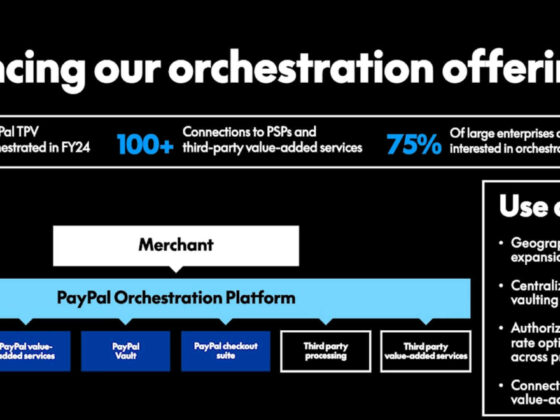By ATGL
Updated July 5, 2025
When chaos looms in the financial markets, trading halts operate as a crucial pause button. These temporary stops in trading serve as safeguards to ensure fair and orderly market conditions when faced with unexpected events or extreme volatility. Understanding these mechanisms is key for investors seeking to navigate the turbulent waters of the stock market with confidence.
In this article, we will demystify trading halts by examining why they occur and the different types, including news-related, volatility-based, and market-wide halts. We will also delve into the regulatory guidelines that govern them, alongside insights into their typical duration and the effects on stock prices during and after these pauses. Additionally, the discussion will offer practical strategies for managing your positions during trading halts and highlight common mistakes to avoid.
By the end, you will gain a comprehensive overview of how traders can prepare for and respond to trading halts efficiently. Whether you’re a seasoned trader or a curious novice, this article will equip you with the knowledge to better understand and handle the intricacies of market trading halt rules.
What Are Trading Halts and Why Do They Occur
A trading halt is a temporary pause in the buying and selling of a specific stock or the broader market, typically lasting from a few minutes to several hours. These pauses are enforced by exchanges or regulatory bodies like the SEC or FINRA to maintain fair and orderly market conditions.
Trading halts can occur for several reasons:
- Regulatory halts: Triggered by pending material news or significant price movements.
- Non-regulatory halts: Caused by technical or operational issues.
Much like pressing “pause” during a live broadcast, halts allow time for the market to digest critical information or address technical issues without triggering panic. They usually last from a few minutes to several hours.
Understanding trading halts is essential for investors, as they help prevent impulsive decisions during periods of high volatility and ensure trading resumes in a more stable environment. For those engaged in stock trading, knowing how and why halts occur is key to navigating market disruptions and protecting positions effectively.
Different Types of Trading Halts
There are two main types of trading halts: regulatory and non-regulatory. Regulatory halts occur when a stock exchange or authority finds a reason to pause trading. This could happen due to significant company news or pending announcements that might affect trading activity. Non-regulatory halts, like technical issues, are often less frequent but may affect several stocks at once. Understanding these types helps traders respond appropriately during a halt.
News-related Halts
News-related halts are pauses in trading triggered by significant company news or announcements. These halts allow time for investors to absorb new information that could impact stock prices. Regulatory authorities, such as the SEC or the listing exchange, enforce these halts. The goal is to keep trading fair and prevent panic selling or buying. During such halts, traders can review the news, interpret its potential effects on the market, and make informed decisions. For example, a company announcing a merger or acquisition deal might lead to a news-related trading halt.
Investors should keep an eye on any material information about companies in their portfolio. Such material information usually involves fundamental changes that could alter the company’s stock valuation. Traders often use news-related halts to reassess their positions, ensuring they align with the newly available data. This pause in trading provides a strategic window for recalibration, minimizing the risk of hasty decisions based on incomplete information.
Volatility-based Halts
Volatility-based halts occur when there are large, rapid price swings in a stock or the overall market. These halts help stabilize trading by pausing it during extreme fluctuations. Known as “Limit Up Limit Down” scenarios, they aim to prevent disorderly trading and maintain a fair market environment. Exchanges, like the NYSE American and the S&P 500 Index, apply these halts to ensure prices reflect true market value.
Traders need to understand the thresholds that trigger these volatility-based halts. Once the price moves beyond a predetermined limit, trading pauses to prevent excessive volatility. This gives both the market and traders a cooling-off period. In this time, investors can evaluate whether the price movement is justified. By pausing trading, these halts prevent knee-jerk reactions, which could lead to larger market fluctuations.
Market-wide Halts
Market-wide halts are broader suspensions that affect trading across the entire stock market. They often result from extreme market conditions or crises that impact the stock exchange as a whole. Commonly known as “Market-Wide Circuit Breakers,” these halts are set in motion when key indices, like the S&P 500, drop by a significant percentage. The primary goal is to prevent a market crash by providing a pause for evaluation and recovery.
These halts are especially relevant during times of political unrest or severe economic downturns. They usually have three trigger levels, each resulting in longer halts depending on the drop’s severity. Such measures are crucial for calming markets and giving investors a chance to reassess their positions. For traders, understanding the conditions that initiate market-wide halts can be critical in strategizing how to handle sudden, widespread disruptions.
Regulatory Guidelines Governing Trading Halts
Regulatory guidelines for trading halts are set by authorities like FINRA and the SEC. They define why a halt might occur and outline procedures for resuming trading. Halts can last from a few minutes to several hours, depending on the reason. Exchanges, like the New York Stock Exchange, follow these rules to ensure transparency and fairness in trading. Such guidelines are vital for keeping markets orderly during disruptions.
How Long Do Trading Halts Last?
Trading halts are temporary pauses in the trading of a stock or other securities. These halts are important for maintaining fair and orderly markets. They can last from a few minutes to several hours, depending on the situation. The duration of a halt can be influenced by regulatory reasons, significant news, or market volatility. Understanding the types of trading halts, their durations, and the factors that affect them can help traders navigate these pauses effectively.
What Happens To Stock Prices During and After Halts
When a trading halt occurs, the stock price is frozen at its last traded value. This pause in trading allows for the dissemination of important company news or material information to be reviewed by investors. During the halt, buy and sell orders accumulate, creating pressure on both sides. When trading resumes, this accumulated demand can lead to volatility spikes. For instance, during a market-wide trading halt, such as those triggered by Market-Wide Circuit Breakers on the NYSE or the S&P 500, trading activity pauses to maintain orderly markets during turbulent times. When trading resumes, price discovery can be more challenging, as investors rush to react to the halted information, potentially causing rapid changes in stock prices. These spikes emphasize the importance of strategic planning and risk management during and after trading halts.
Strategies for Managing Positions During Trading Halts
Trading halts can occur for various reasons, such as significant news announcements or abnormal trading activity. Understanding how to manage positions during these interruptions is crucial for traders. Effective strategies can help limit exposure and prepare for volatility. This section will provide guidance on planning trades around potential halts and how to adapt once trading resumes. By focusing on these strategies, traders can protect their investments and make informed decisions despite market disruptions.
Understanding how trading halts interact with established trading patterns can help investors better anticipate price movements and make more informed adjustments when the market resumes. For short-term traders, recognizing how halts can disrupt or confirm day trading patterns is critical to preserving momentum and avoiding mistimed entries or exits.
Tips for Navigating Volatility After Market Halts
Navigating the volatility that follows a market halt can be challenging, but preparation can help smooth the transition. First, traders need to remain calm and avoid making hasty decisions. Monitoring market news helps in predicting possible halts and allows traders to act quickly when necessary. Limiting exposure by diversifying investments can also minimize risks.
Once trading resumes, volatility may increase. Traders should look for confirmation signals before taking any action. These signals, such as price trends or volume changes, help ensure that the decision aligns with market movements. Implementing stop-loss orders is another key tactic. This protective measure limits potential losses if stock prices swing dramatically.
Real-world examples show the impact of halts. For instance, during the 2015 “Flash Crash,” timely trading halts helped stabilize the market. Traders who used stop-loss strategies were able to minimize losses. By employing these techniques, traders can better manage positions during and after trading halts.
Understanding how halts interact with popular trading patterns —such as breakouts, reversals, or flags—can provide traders with an edge when determining how to respond once trading resumes.
Common Mistakes Traders Make With Trading Halts
Traders often make mistakes when dealing with trading halts, which can lead to significant financial losses. Understanding the common pitfalls is crucial for maintaining a stable trading performance.
Common Mistakes Traders Make:
- Ignoring Regulatory Announcements: Traders may overlook key regulatory reports that lead to trading halts. Failing to stay informed can result in uninformed trading decisions.
- Misjudging Halt Durations: Many traders assume all trading halts are short-lived. In reality, durations vary, and misjudging them might lead to poorly timed buy or sell orders.
- Overreacting to News: Sometimes, significant news causes a trading pause. Reacting too quickly without verifying the information can cause traders to make rash decisions.
- Failing to Adjust Strategies: When a stock halts, many traders don’t update their trading strategies. This failure can result in missed opportunities when trading resumes.
- Inadequate Position Management: Traders often neglect to reassess the risk of their positions during a halt, leaving them vulnerable when trading reopens.
Understanding these mistakes can help traders navigate trading halts more effectively, ensuring their decisions are well-informed and strategic. Keeping an eye on the stock exchange announcements and market trends is crucial for avoiding these pitfalls.
Next Steps for Traders to Stay Prepared
Market trading halts can catch traders off guard. But, there are steps you can take to stay ready. First, it’s important to use the right tools to track trading activity. Platforms like the New York Stock Exchange and the Over The Counter Bulletin Board provide updates on trading suspensions and delays.
Here are actionable steps to consider:
- Monitor Real-Time Data: Use trading platforms that offer real-time alerts for trading halts.
- Set Up News Alerts: Stay updated on significant news or material information about companies.
- Understand Rules: Familiarize yourself with regulatory trading halts, non-regulatory halts, and the Limit Up Limit Down mechanism.
- Analyze Impact: Review the halt’s impact on stock prices, especially in indices like the S&P 500.
- Stay Informed: Keep an eye on the Consolidated Tape for up-to-date trading activity.
Resources to Use:
| Tool/Platform | Purpose |
| Trading Software (e.g., Bloomberg) | Real-time market data alerts |
| News Aggregators (e.g., Google Alerts) | Updates on significant events |
| Exchange Websites (e.g., NYSE) | Official announcements |
By following these steps, you can better manage your positions during trading pauses.
How To Learn More About Market Trading Halt Rules
Understanding market trading halts is crucial for investors. They ensure fair and orderly markets. Here’s a guide on how to learn more about these rules.
Types of Trading Halts:
- Regulatory Trading Halt: Imposed for regulatory reasons. Often due to the need to release significant news.
- Non-Regulatory Trading Halt: Can occur due to technical issues.
Key Resources to Explore:
- New York Stock Exchange and NASDAQ websites offer detailed information on trading suspensions.
- The SEC website explains regulatory halts.
- Financial news outlets report on market-wide trading halts and company information.
Strategies During Trading Halts:
- Review buy and sell orders.
- Analyze the impact on stock prices.
Use These Tips to Stay Informed:
- Look up the S&P 500 Index for market trends.
- Understand Market-Wide Circuit Breakers and Limit Up Limit Down rules.
- Stay updated on listing exchange and significant news about securities exchanges.
Stay informed to make smart investment choices. Sign up for updates on trading halt rules from Above the Green Line. Keep enhancing your market knowledge!
Related Articles












